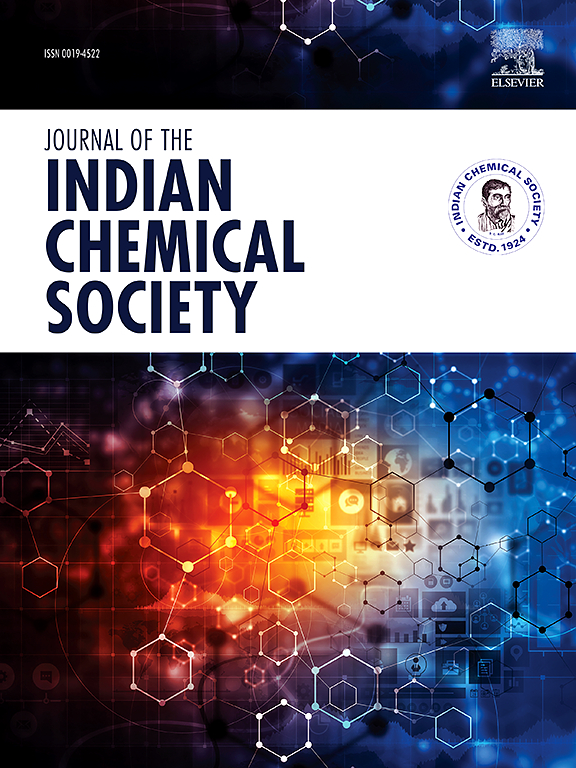新型杂合喹唑啉酮:合成、表征、体外及硅片抗菌研究
IF 3.2
4区 化学
Q2 CHEMISTRY, MULTIDISCIPLINARY
引用次数: 0
摘要
喹唑啉-4(3H)- 1衍生物是一类很有前途的杂环骨架,具有广泛的药理潜力,因为它们能够与各种生物靶点(如蛋白激酶、受体和酶)相互作用。本研究通过n -烷基化反应合成了一系列新的喹唑啉-4(3H)- 1 -乙酰胺杂合体。通过红外光谱(IR)、核磁共振(NMR)和高分辨率质谱(HRMS)对合成化合物的结构进行了确证。在体外对大肠杆菌、铜绿假单胞菌、金黄色葡萄球菌、肠炎沙门氏菌和枯草芽孢杆菌5种病原菌进行抑菌活性评价。其中化合物3b、3h和3f的抑菌活性最强。在计算机研究中,包括分子对接模拟、ADMET预测和分子动力学模拟,通过揭示强结合亲和力和良好的药代动力学特征证实了这些结果。综上所述,所合成的喹唑啉酮-乙酰胺复合物,特别是化合物3b、3h和3f,具有作为有效抗菌药物的潜力。本文章由计算机程序翻译,如有差异,请以英文原文为准。

Novel hybrids-based quinazolinone: Synthesis, characterization, in vitro and in silico antibacterial investigations
Quinazoline-4(3H)-one derivatives constitute a promising class of heterocyclic skeletons with broad pharmacological potential due to their ability to interact with various biological targets such as protein kinases, receptors, and enzymes. In this study, a series of new quinazoline-4(3H)-one-acetamide hybrids was synthesized by N-alkylation reaction, combining these pharmacophores known for their potent bioactivities. The structures of the synthesized compounds were confirmed by infrared spectroscopy (IR), nuclear magnetic resonance (NMR), and high-resolution mass spectrometry (HRMS). The antibacterial activity of the hybrids was evaluated in vitro against five pathogenic bacterial strains: Escherichia coli, Pseudomonas aeruginosa, Staphylococcus aureus, Salmonella enterica, and Bacillus subtilis. Several of the synthesized hybrids demonstrated promising antibacterial effects, with compounds 3b, 3h, and 3f exhibiting the most significant activity. In silico studies, including molecular docking simulations, ADMET predictions, and molecular dynamics simulations, corroborated these results by revealing strong binding affinities and favorable pharmacokinetic profiles. Overall, the results suggest that the synthesized quinazolinone-acetamide hybrids, particularly compounds 3b, 3h, and 3f, show potential as effective antibacterial agents.
求助全文
通过发布文献求助,成功后即可免费获取论文全文。
去求助
来源期刊
CiteScore
3.50
自引率
7.70%
发文量
492
审稿时长
3-8 weeks
期刊介绍:
The Journal of the Indian Chemical Society publishes original, fundamental, theorical, experimental research work of highest quality in all areas of chemistry, biochemistry, medicinal chemistry, electrochemistry, agrochemistry, chemical engineering and technology, food chemistry, environmental chemistry, etc.

 求助内容:
求助内容: 应助结果提醒方式:
应助结果提醒方式:


